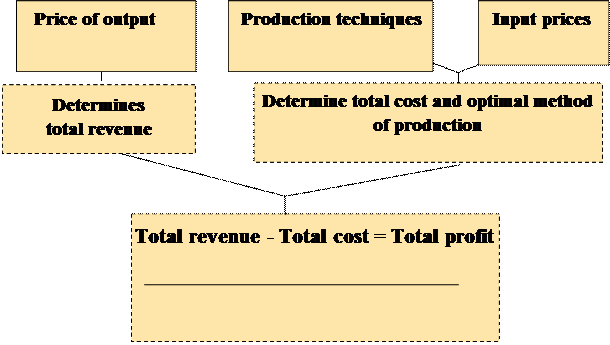
КАТЕГОРИИ:
Архитектура-(3434)Астрономия-(809)Биология-(7483)Биотехнологии-(1457)Военное дело-(14632)Высокие технологии-(1363)География-(913)Геология-(1438)Государство-(451)Демография-(1065)Дом-(47672)Журналистика и СМИ-(912)Изобретательство-(14524)Иностранные языки-(4268)Информатика-(17799)Искусство-(1338)История-(13644)Компьютеры-(11121)Косметика-(55)Кулинария-(373)Культура-(8427)Лингвистика-(374)Литература-(1642)Маркетинг-(23702)Математика-(16968)Машиностроение-(1700)Медицина-(12668)Менеджмент-(24684)Механика-(15423)Науковедение-(506)Образование-(11852)Охрана труда-(3308)Педагогика-(5571)Полиграфия-(1312)Политика-(7869)Право-(5454)Приборостроение-(1369)Программирование-(2801)Производство-(97182)Промышленность-(8706)Психология-(18388)Религия-(3217)Связь-(10668)Сельское хозяйство-(299)Социология-(6455)Спорт-(42831)Строительство-(4793)Торговля-(5050)Транспорт-(2929)Туризм-(1568)Физика-(3942)Философия-(17015)Финансы-(26596)Химия-(22929)Экология-(12095)Экономика-(9961)Электроника-(8441)Электротехника-(4623)Энергетика-(12629)Юриспруденция-(1492)Ядерная техника-(1748)
Isoquant and Isocost. Law of diminishing returns
|
|
|
|
Law of diminishing returns
Average, Marginal and Total Product
Time and Production. Production in the Short-Run
Production Function
Lecture 7. Production
1. The process of production and it’s objective
4. Producer’s behavior
4.2. Cost minimization (Producer’s choice optimisation)
1. The process of production and it’s objective
Production is the process of altering resources or inputs so they satisfy more wants. Before goods can be distributed or sold, they must be produced. Production, more specifically, the technology used in the production of a good (or service) and the prices of the inputs determine the cost of production. Within the market model, production and costs of production are reflected in the supply function.
Production processes increase the ability of inputs (resources) to satisfy wants by:
– a change in physical characteristics;
– a change in location;
– a change in time;
– a change in ownership.
At its most simplistic level, the economy is a social process that allocates relatively scarce resources to satisfy relatively unlimited wants. To achieve this objective, inputs or resources must be allocated to those uses that have the greatest value. In a market setting, this is achieved by buyers (consumers) and sellers (producers) interacting:
As we know consumers or buyers wish to maximize their utility or satisfaction given (or constrained by) their incomes, preferences and the prices of the goods they may buy. The behavior of the buyers or consumers is expressed in the demand function.
The producers and/or sellers have other objectives. Profits may be either an objective or constraint. As an objective, a producer may seek to maximize profits or minimize cost per unit. As a constraint the agent may desire to maximize “efficiency” market share, rate of growth or some other objective constrained by some “acceptable” level of profits.
All firms must make several basic decisions to achieve what we assume to be their primary objective – maximum profits:
1. How much output to supply;
2. Which production technology to use;
3. How much of each input to demand.
In the long run, a private producer will probably find it necessary to produce an output that can be sold for more than it costs to produce. The costs of production (Total Cost, TC) must be less than the revenues (Total Revenue, TR).
So the behavior of profit-maximizing firms can be described with the following scheme called “ Determining the optimal method of production”:

In the circular flow diagram found in most principles of economics texts, production takes place in a "firm" or "business." When considering the production-cost relationships it is important to distinguish between such production units as firms and plants.
A plant is a physical unit of production. The plant is characterized by physical units of inputs, such as land (R) or capital (K). This includes acres of land, deposits of minerals, buildings, machinery, roads, wells, and the like.
The firm is an organization that may or may not have physical facilities and engage in production of economic goods. In some cases the firm may manage a single plant. In other instances, a firm may have many plants or no plant at all.
The cost functions that are associated with a single plant are significantly different from those that are associated with a firm. A single plant may experience economies in one range of output and diseconomies of scale in another. Alternatively, a firm may build a series of plants to achieve constant or even increasing returns. General Motors Corp. is often used as an example of an early firm that used decentralization to avoid rising costs per unit of output in a single plant.
Unless specifically identified, the production and cost relationships will represent a single plant with a single product.
|
|
|
|
|
Дата добавления: 2014-01-11; Просмотров: 604; Нарушение авторских прав?; Мы поможем в написании вашей работы!